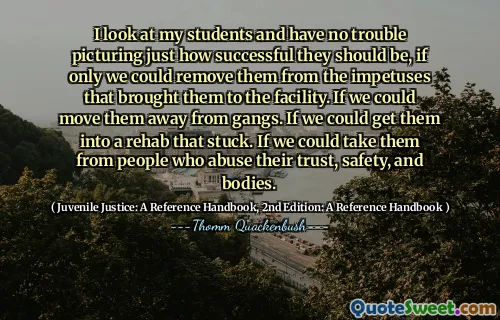"Juvenile Justice: A Reference Handbook, 2nd Edition" provides an in-depth exploration of the juvenile justice system in the United States. The book offers a comprehensive overview of various aspects of the system, including its history, laws, and the challenges it faces. It examines the societal factors contributing to youth crime and the legal processes involved in handling juvenile offenders, ensuring that readers understand the complexities of the issue.
The handbook also discusses the differences in juvenile and adult justice systems, highlighting how minors are treated differently under the law. It addresses key topics such as rehabilitation versus punishment, the role of parents and guardians, and the impact of criminal records on young individuals. By providing statistical data and case studies, the book emphasizes the importance of a nuanced approach to juvenile justice.
Additionally, the second edition updates previous content with current trends and reforms in juvenile justice, focusing on prevention and alternative programs to incarceration. It serves as a valuable resource for students, researchers, and practitioners by promoting informed discussions surrounding juvenile crime and justice policy. This thorough reference not only details the mechanics of the system but also sparks discourse on how to better support at-risk youth.
More »
Today Birthdays
1946 -
Patti Smith
1961 -
Douglas Coupland
1865 -
Rudyard Kipling
1981 -
Isaac Marion
1879 -
Ramana Maharshi
1984 -
LeBron James
1975 -
Tiger Woods
1986 -
Ellie Goulding
1918 -
Al Purdy
1942 -
Vladimir Bukovsky
1978 -
Tyrese Gibson
1935 -
Sandy Koufax
1980 -
Eliza Dushku
1884 -
Hideki Tojo
1989 -
Ryan Sheckler
1977 -
Laila Ali
1963 -
Mike Pompeo
1984 -
Andra Day
1986 -
Caity Lotz
1974 -
Ryan Holmes
1992 -
Carson Wentz
1935 -
Omar Bongo
1954 -
Rodney Brooks
1976 -
Rhianna Pratchett
1873 -
Al Smith
1945 -
Lloyd Kaufman
1956 -
Marty Meehan
1950 -
Bjarne Stroustrup
1949 -
Jim Flaherty
1942 -
Michael Nesmith
